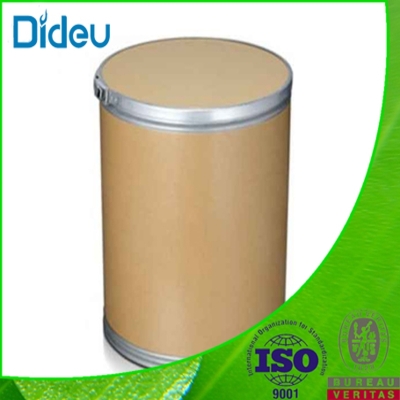-
Categories
-
Pharmaceutical Intermediates
-
Active Pharmaceutical Ingredients
-
Food Additives
- Industrial Coatings
- Agrochemicals
- Dyes and Pigments
- Surfactant
- Flavors and Fragrances
- Chemical Reagents
- Catalyst and Auxiliary
- Natural Products
- Inorganic Chemistry
-
Organic Chemistry
-
Biochemical Engineering
- Analytical Chemistry
-
Cosmetic Ingredient
- Water Treatment Chemical
-
Pharmaceutical Intermediates
Promotion
ECHEMI Mall
Wholesale
Weekly Price
Exhibition
News
-
Trade Service
Postpartum depression (PPD) is the most common complication after childbirth, and its serious consequences can affect both the mother and the child
.
Maternal suicide accounts for 20% of postpartum deaths, and maternal depression has been shown to disrupt a baby's cognitive, emotional and social development
.
While some women, especially those who already have mood disorders, become depressed during pregnancy, others experience symptoms
only after giving birth.
Genetic evidence suggests that women who develop symptoms in the postpartum period, especially within 4-6 weeks after delivery, may be biologically different
from those who present postpartum depression as a continuation of the disease that begins in pregnancy.
Although postpartum depression has significant public health implications, we have limited
understanding of the biological mechanisms by which it develops.
Previous studies have focused on the vulnerability of changes in reproductive hormones; abnormal thyroid, oxytocin, and HPA axes; and genetic and epigenetic processes
.
Recently, numerous studies have confirmed that immune dysregulation may be a mechanism
.
There is literature supporting the role of peripheral immunomarkers (although these data are inconsistent) and alterations in immune cell populations, but little is known about other markers of immune function
.
Recently, Cornell University School of Medicine published research results in the journal Molecular Psychiatry, which found that extracellular RNA communication in PPD patients is widely altered, and there is a direct link between reduced autophagy and PPD in plasma samples of PPD patients, which provides a theoretical basis for the development of PPD biomarkers and therapeutic drugs based on EV mRNA
。
Extracellular RNA communication is a form of cell-to-cell communication discovered in recent years and is involved in a variety of important biological processes
, including pregnancy.
Extracellular vesicles (EVS) levels have been found to be significantly elevated during pregnancy, and extracellular RNA communication has been shown to be involved in many pregnancy-related biological processes
, such as embryonic implantation, uterine spiral artery remodeling, fetal virus immunity, childbirth, and preterm birth.
However, whether there is a link between extracellular RNA communication and PPD is unclear
.
The researchers prospectively collected plasma samples from 14 pregnant women at a total of 6 time points, including pregnancy (2nd, 3rd) and postpartum (2nd, 6th, 3rd and 6th months), and then characterized
the mRNA content in maternal EVs in the experimental group (N = 7) and control group (N = 7).
The results of differential expression analysis showed that 216 EV mRNA levels in the experimental group of PPD patients had significant changes in pregnancy and postpartum, while the levels of 701 EV mRNAs in the control group changed significantly during pregnancy and postpartum, and only 57 (26.
4%) of the changed EV mRNAs overlapped
between the experimental group and the control group.
EV mRNA communication for PPD is disrupted
In PPD cases, EV mRNA levels peak in the third trimester and drop sharply immediately after delivery, and although some EV mRNA levels in PPD patients increase during the 2-6 weeks postpartum, their overall EV mRNA levels remain largely stable
after delivery.
The control group experienced a peak in the first EV mRNA level in the third trimester, but the increase was small, followed by a second peak in EV mRNA levels 2 weeks postpartum, and a steady increase
in EV mRNA levels between 6 weeks and 6 months postpartum.
EV mRNA communication in PPD patients was extensively altered
compared to controls.
Further DESeq2 analysis showed that there were significant differences in EV mRNA levels between PPD cases and controls, of which 439 EV mRNAs decreased in PPD patients and 1001 EV mRNAs increased in PPD, and changes in EV mRNA levels in PPD patients mainly occurred in the second and third trimesters
.
Changes in EV mRNA in pregnancy and postpartum PPD
To identify EV mR that has changed in PPD patients The potential capabilities of NA, the researchers next performed gene ensemble enrichment analysis
using annotation, visualization, and the DAVID bioinformatics resources, an integrated discovery database.
It was found that EV mRNA reduced in PPD patients was enriched in pathways associated with autophagy
.
The pathway enrichment results showed that the reduced EV mRNA in PPD patients was mainly enriched in the gene pathways of autophagy-related processes such as cell adhesion ligation, lysosomal function, GTPase function, microtubule and septin, while the increased EV mRNA in PPD patients was mainly enriched in gene pathways related to ribosome and mitochondrial function
.
The reduction in EV mRNA in PPD patients is largely associated with
autophagy.
Cellular deconvolution analysis of EV mRNA
Finally, to determine the confidence of the results of the pre-sequencing analysis, the researchers further designed a quantitative PCR experiment
.
Based on the fact that the SET and COX6C genes had very significant p-values in the sequencing analysis of this study, the researchers performed quantitative PCR on EV mRNA isolated from plasma samples collected from another cohort (14 PPD cases and 14 controls) and found that EV mRNA levels of both SET and COX6C during pregnancy were significantly elevated
in PPD patients in this cohort compared to the control group.
The results confirmed the high confidence of the results of the previous sequencing analysis, indicating that the changes in EV mRNA levels in PPD patients were universal in different cohorts
.
Quantitative PCR results for cohort EV mRNA levels were validated
This study demonstrates that extracellular RNA communication in PPD patients is widely altered, alterations in EV mRNA are enriched in genes associated with the autophagy process, mainly involving monocytes and macrophages, and disruption of EV mRNA communication associated with autophagy may be a potential pathology
of PPD.
This study provides a promising target for PPD-related medical research, which is expected to develop biomarkers for the early detection and diagnosis of PPD
.
Original source
Osborne, Lauren M et al.
“Altered extracellular mRNA communication in postpartum depression is associated with decreased autophagy.
” Molecular psychiatry, 10.
1038/s41380-022-01794-2.
22 Sep.
2022, doi:10.
1038/s41380-022-01794-2







